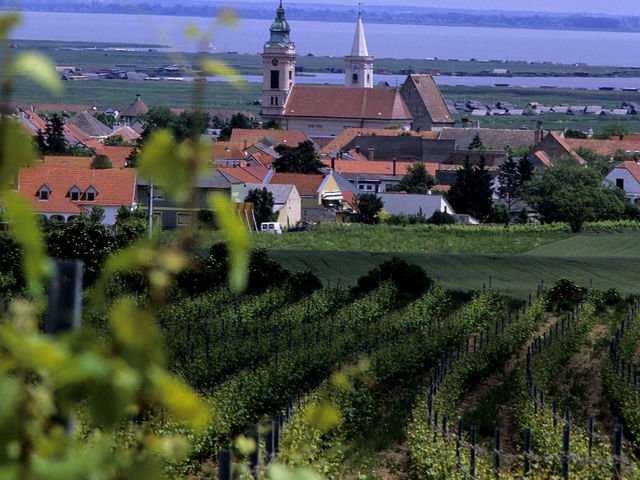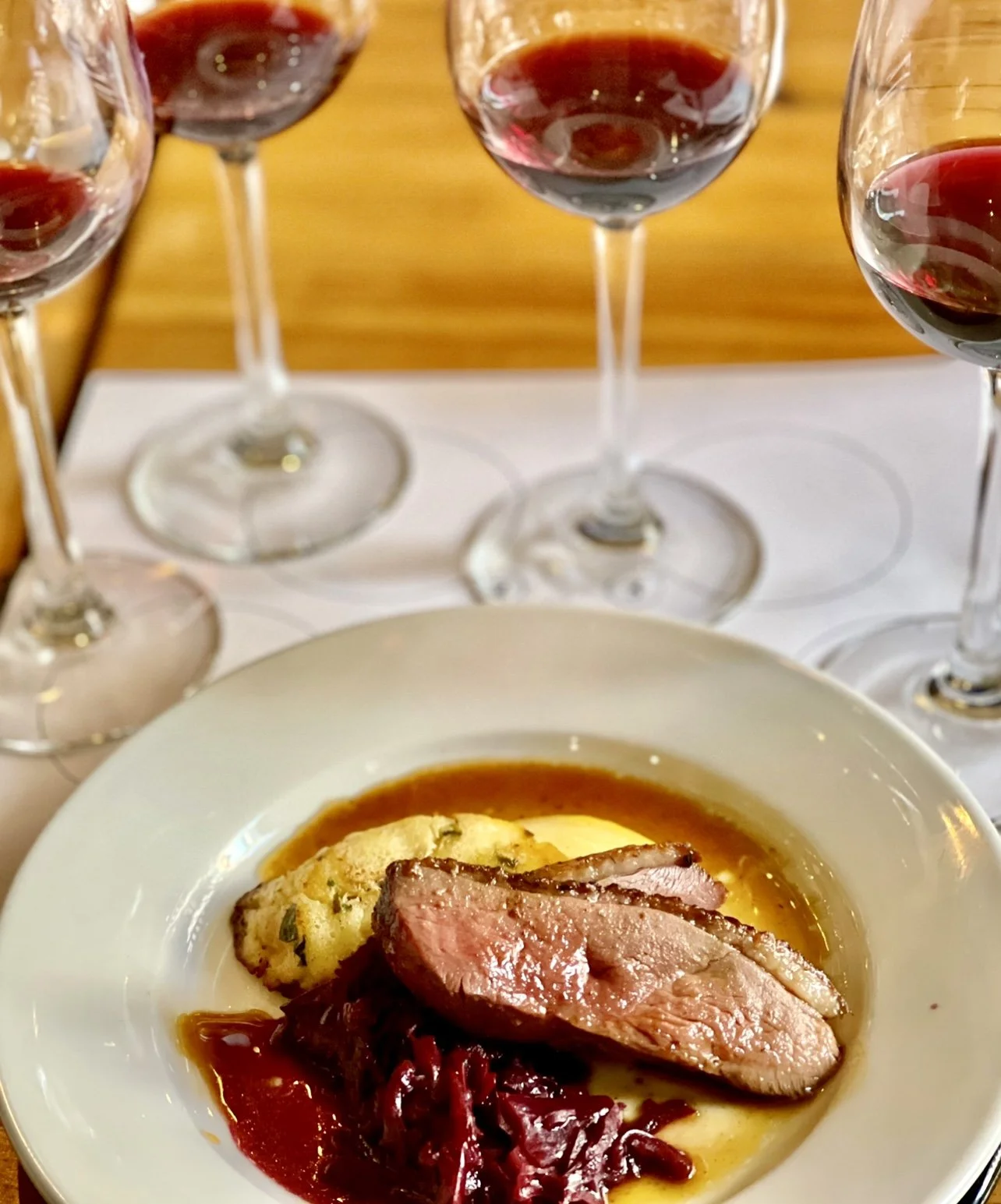The Amazing Wines of Burgenland, Austria
/Working in a wine shop, my favorite customers are the curious ones looking to discover off-the-beaten-path wine regions. They say things like, “Croatia makes wine? Let’s try one!” That’s my cue to introduce them to one of many unknown regions that are making fantastic wines.
Then there are those customers who stick with the longtime classics, like the famous (and famously expensive) wines of Burgundy, Bordeaux, Barolo, Brunello and Napa—if I worked on commission they would be my favorite customers! All kidding aside, these wines are classics for a reason and their popularity is well-deserved, yet it’s unfortunate that there are so many exciting wine regions being overlooked by wine drinkers who won’t give them a chance.
Unfamiliar places like Savoie in France, Priorat in Spain and Kakheti in Eastern Georgia are three of the many regions making delicious, superb-value wines that most Americans have never heard of. Admittedly, these under-the-radar wines can be hard to find but when discovered, they provide a treasure trove for adventurous wine lovers.
Burgenland Austria is another one of these undiscovered wine regions ripe for exploring. Fantastic wines are being made here, yet I would venture to say that most Americans have never tried a wine from Austria, let alone Burgenland, and they are really missing out.
Image courtesy of Austrianwine.com.
The Scoop on Burgenland
The Burgenland region is Austria's easternmost province, created in 1921 from German-speaking areas of what was formerly Hungary. Located about one hour’s drive south of Vienna, Burgenland’s climate is strongly influenced by an ancient lakebed, the Pannonian Plain, that creates a continental climate of hot, dry summers. The region’s warm climate is essential for the production of opulent reds, complex whites and some of the world’s best noble sweet wines.
Map courtesy of Wine Folly.
Burgenland is home to five DAC areas (DAC denotes a district making quality wines): Mittelburgenland, Leithaberg, Eisenberg, Neusiedlersee, and the newly-formed Rosalia.
In Burgenland, red wine varieties, particularly Blaufränkisch and Zweigelt (but also Saint Laurent, Pinot Noir and others) dominate with 55% of the total grape production. Blaufränkisch takes the lead in three of the four areas, with Zweigelt standing in the limelight solely in Neusiedlersee.
Burgenland produces almost all of Austria’s great sweet wines as well. The moist climate around Lake Neusiedl, in combination with warm fall days, facilitates the development of noble rot, a beneficial form of grey fungus that is required to produce these special sweet wines.
And, with 45% of Burgenland’s vineyards planted with white grape varieties, the region has a lot to offer when it comes to white wine too. The region’s two most planted white grapes are Welschriesling and Grüner Veltliner, but there are several other interesting varieties like Pinot Blanc, Chardonnay and Neuburger that make delicious whites of medium to full body with a lot of complexity.
A Surge of Quality
For a July 2019 article on Austrian reds, I spoke with Valerie Kathawala, co-founder of Trink Magazine who spoke about the up-and-coming generation of well-educated Austrian growers who are bringing a deeply nuanced understanding of soil, climate, varieties, vineyard elevation, and exposure to their plantings of Austrian red grape varieities. “Most importantly,” she said, “they are vinifying them with unprecedented sensitivity.”
Burgenland, in particular, is being hailed as a region whose greatest asset is the latest generation of innovative and pioneering wine growers and producers. Wine critics have begun noticing the increase in quality of the wines and are giving them the awards and accolades they deserve.
Wines For Food
At a recent wine industry seminar and lunch, held at Manhattan’s hip Austrian restaurant, Cafe Katja, a wide range of top quality Burgenland wines were poured, beginning with a terrific Szigeti sparkling Grüner Veltliner that got everyone's appetite going.
The sparkling wine was followed by four “White Surprises,” referring to the fact that, since the region is known mostly for its reds, people are surprised by the wide range of white grape varieties grown in Burgenland.
The whites were followed by four “Red Delights,” and for dessert, we were wowed by the “Sought After” sweet wines paired with Valrhona chocolate mousse and brandied cherries.
Cafe Katja’s duck breast with dumplings and cabbage, perfect with red wine from Burgenland.
Sought after indeed! Sweet Burgenland wines pair beautifully with deserts.
The Takeaway
The stunning wines of Burgenland Austria, while still relatively undiscovered, are gaining traction worldwide for their authenticity and high-quality. Blaufränkisch, a grape that makes fruit-forward, spicy, peppery wines with good tannins and firm acidity, has gradually become the region’s most important grape variety, with Zweigelt, similar to Blaufränkisch but slightly lighter with more acidity, being a close second. Note: the Zweigelt grape was made by crossing Blaufränkisch with the aromatic Saint Laurent variety.
Yet Burgenland also impresses with its diversity: stunning whites, as well as sweet, botrytized wines that are among the finest in the world, right up there with the famous French Sauternes and Hungarian Tokaji.
Food Pairing Potential
The wines of Burgenland, with their bright acidity, are the perfect accompaniment to many cuisines, beginning with Austrian classics like Weiner Schnitzel, sausages and potato goulash. However, these food-friendly wines pair perfectly with many other foods as well—Spanish tapas, Greek salads, and Italian pasta dishes like spaghetti with clams and Penne all’arrabbiata, to name just a few.
My advice: keep your eyes open and try these excellent wines!
Four Wines From Burgenland Worth Seeking Out.
WHITES
Heinrich Naked White 2020
Heinrich, considered one of Austria’s most innovative producers, makes lively wines with lower alcohol and loads of freshness. Naked White, a Chardonnay-based blend, is a wonderfully textured wine with beautiful acidity that envelopes its notes of grapefruit, fine herbs, sea salt, baked apple, and herbs. A really interesting and delicious wine! Note: the wine is cloudy and a gentle shake is recommended before pouring. Find the wine here.
Rosi Schuster Aus den Dörfern 2020
Rosi Schuster is one of Burgenland’s top producers. The Aus den Dörfern is made of 90% Gruner Veltliner, and is a unique rendition of the grape: tasty, refreshing and mineral-driven with notes of herbal spiciness and ripe sun-kissed fruit (lemon and lime zest, apple and pear). Complex in flavor without being too overpowering. Find the wine here.
REDS
Moric Blaufränkisch 2020
Moric is among the premier producers of Blaufränkisch and this wine is a wonderful introduction to Moric’s elegant take on the grape. Made from organically-farmed 85-year-old vines grown in schist and limestone soils at high elevation, the wine is very approachable with easy tannins, a smooth leathery earthiness, peppery spices, and gorgeous red and black fruit notes. Find it here.
Erich Sattler Zweigelt 2019
Zweigelt is known to be fruity and spicy with an appealing acidic tartness. Erich Sattler is emblematic of the new generation of Austrian vintners: a wine-school graduate and the 4th generation in the family to take over his family’s estate. “We make wine as my grandfather did,” he says, “only with better machines.” Sattler winery is certified organic. Find the wine here.
SWEET
Alois Kracher Kollektion Welschriesling Trockenbeerenauslese
The Kracher name is synonymous with Austria’s finest sweet noble wines, lauded for their finesse and balance. Kracher’s 'Kollektion' is a twelve bottle collection produced each year from a variety of grapes, in this case Welschriesling. Amber in color, with aromas of orange peel, prunes, pineapple, apricot and mango. Fresh and vibrant on the palate with a rich texure and hints of honey in the aftertaste. Delicious with desserts like apple strudel or Linzer torte. Find the wine here.
Other Top Burgenland Wine Producers to Look For
Christian Tschida, Hans Igler, Kolfok, Umathum, Claus Preisinger, Heidi Schrock, Judith Beck, Leo Hillinger, Markus Altenburger, Meinklang, Nittnaus, Prieler, Sohm & Kracher, Wachter-Wiesler, Georg Schmelzer, Joiseph, Pittnauer, Velich, Weninger, Zantho, Thomas Straka, Hareter, Jalits










